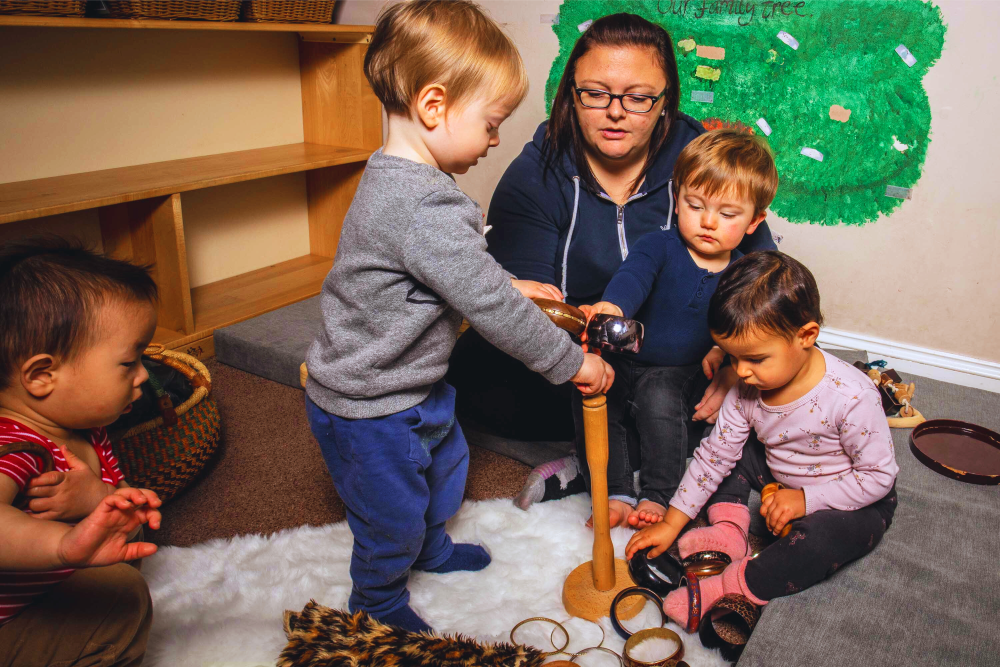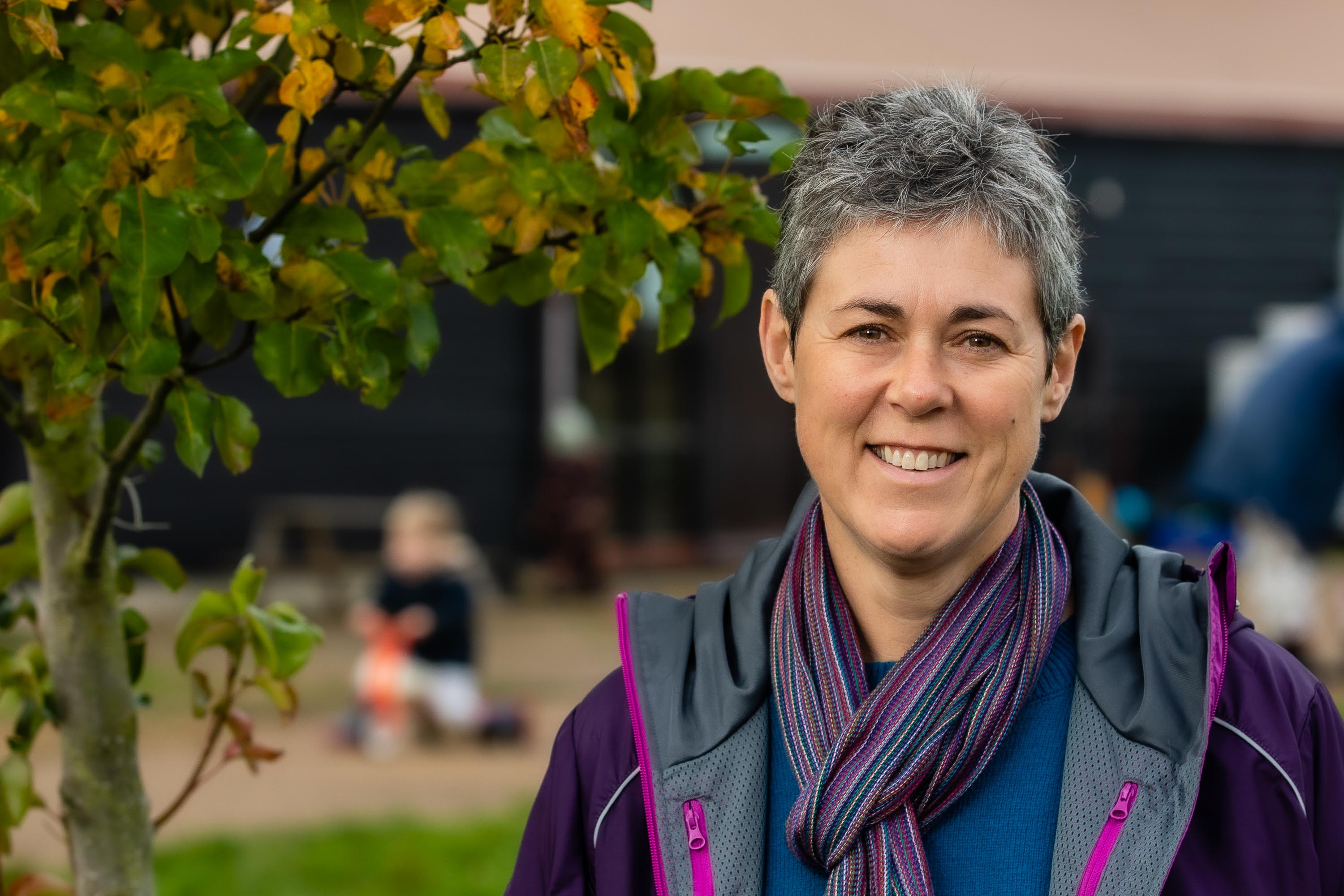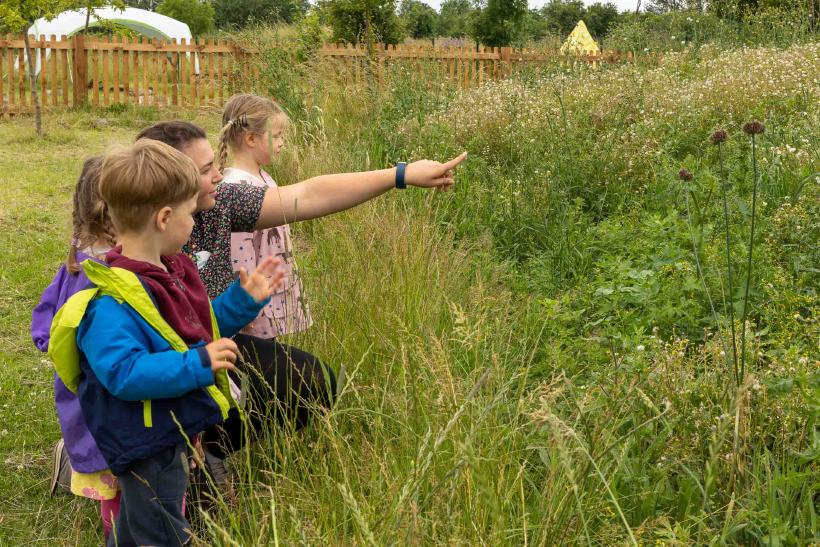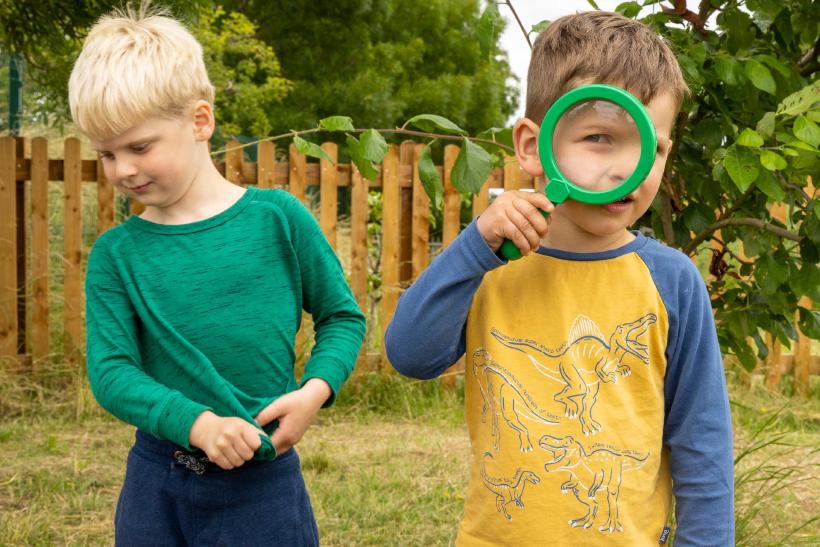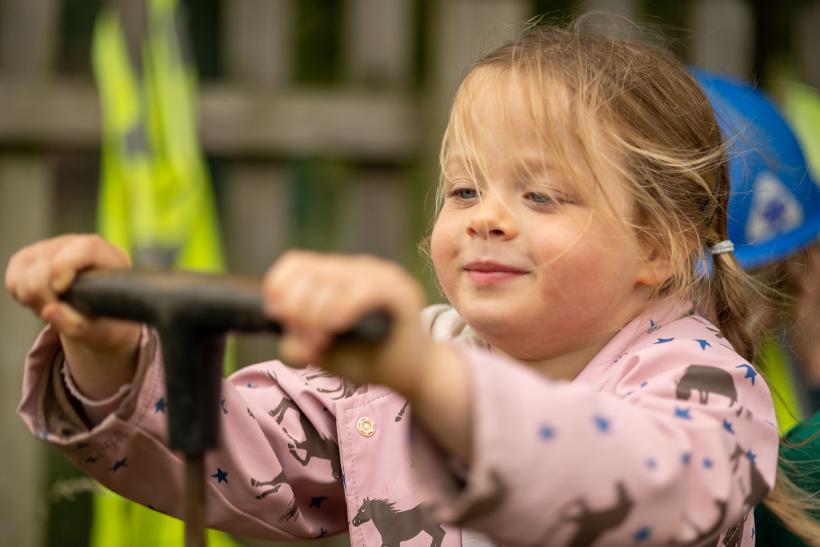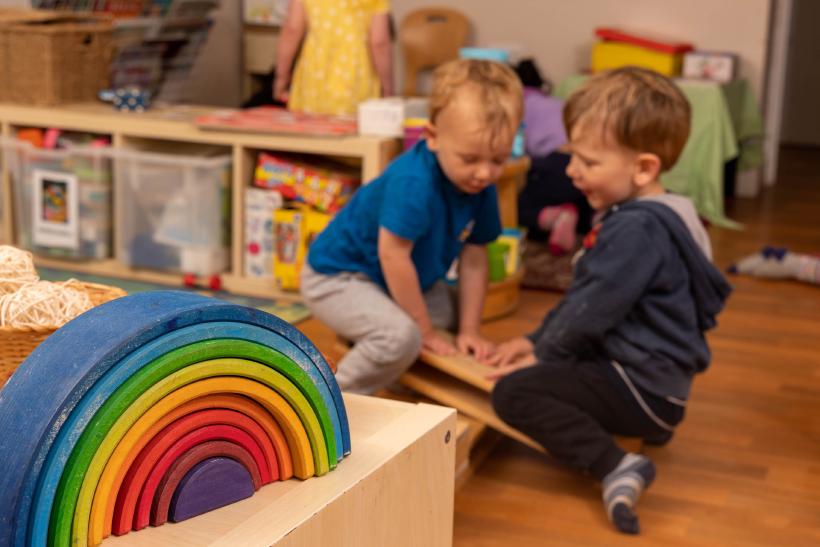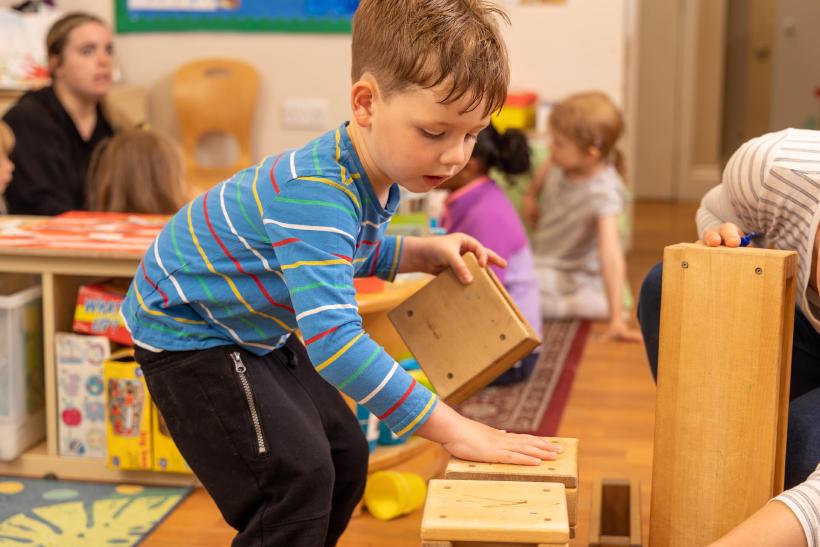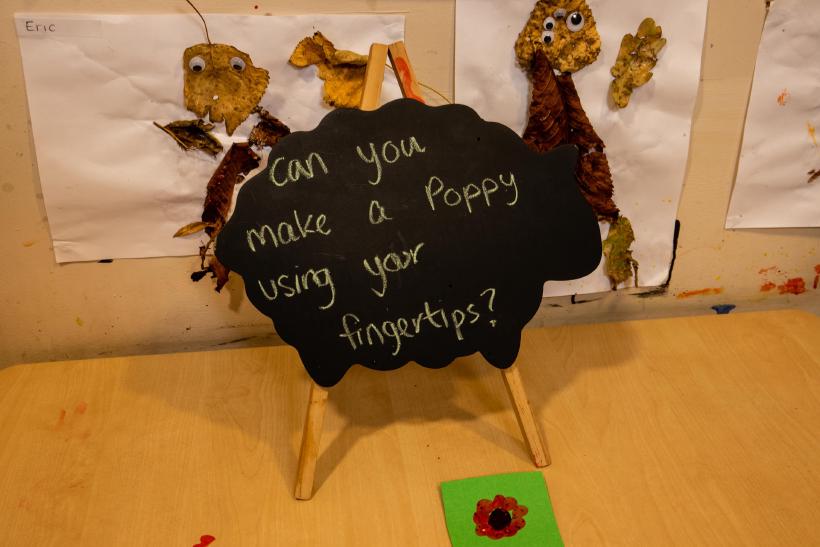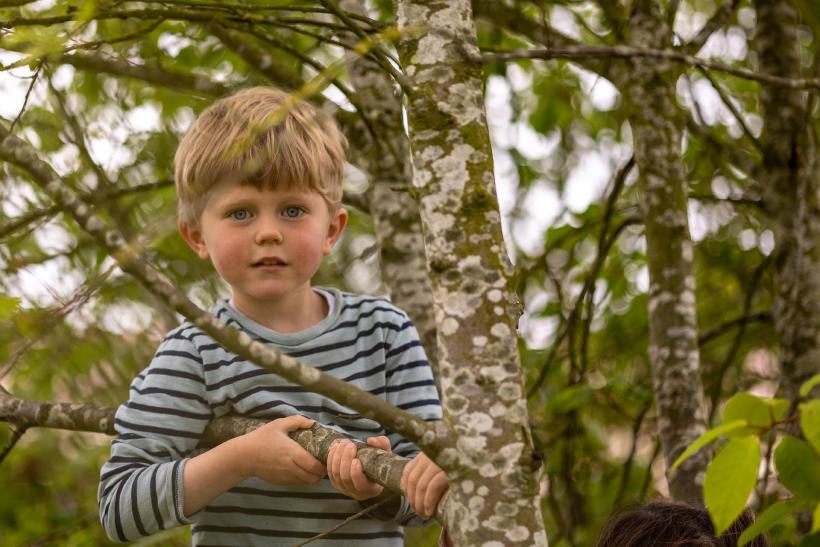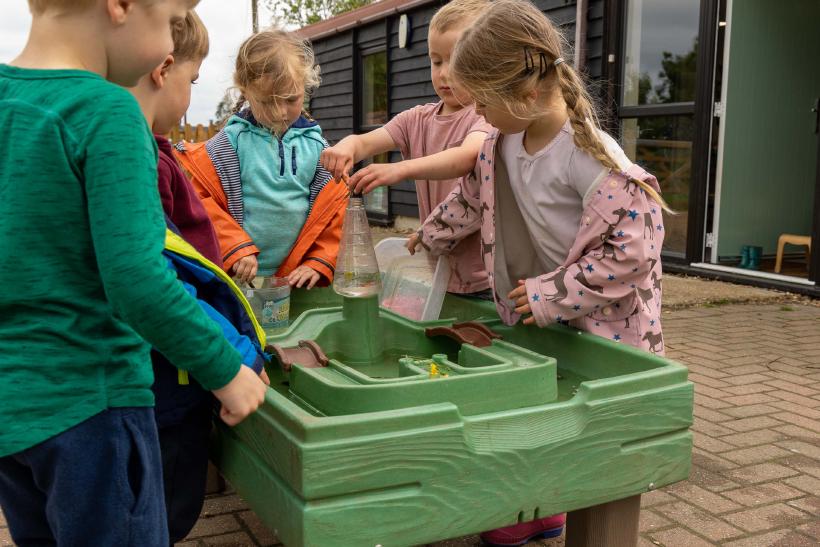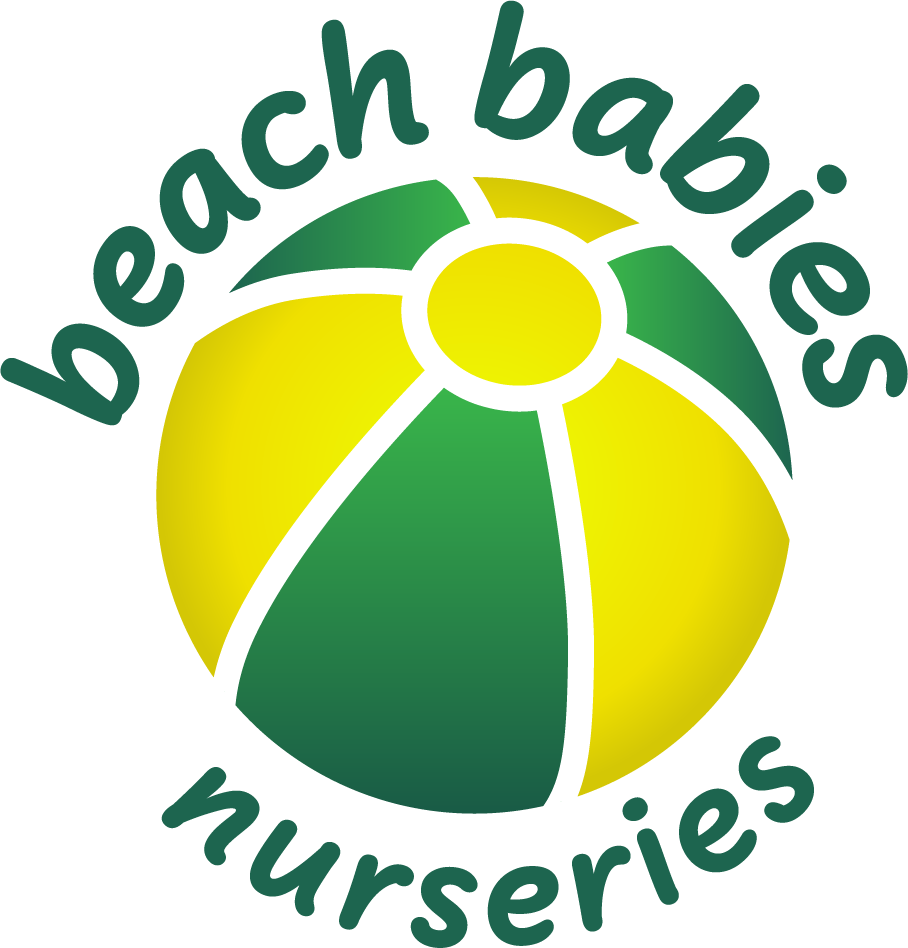Heuristic play
Suitable for children aged from when they are capable crawlers up to 2 or 2 and a half years old
The theory:
It is a child-led play where one or more children play with different objects and move around, often moving the objects with them. That sounds vague but it’s what toddlers do naturally, they move/fill/empty boxes and bags and carry them to other places. The key component is movement, for example a child may roll a cardboard tube across the floor before posting stones down it and watching them come out before moving on to stuffing fabric pieces down it and noticing a difference.
Toddlers learn from a variety of skills from heuristic play.
Independence - they decide what to choose, where to move it to and what to do with it.
Concentration and focus – they become engrossed in small repeated aspects of their play and learn more and more by exploring the same objects or actions several times.
Creativity – the objects they are playing with are open ended, that can be used in many ways unlike many toys designed to fulfil only one role.
Problem solving – they try different ways to achieve their goals, as the adult stand back, watch and wait, don’t jump in unless the child wants your help.
Motor skill development – both gross and fine motor skills are practiced and perfected.
The theorist
Educational psychologist Elinor Goldschmied, she of the treasure baskets, developed the idea of babies and toddlers learning through their own investigations of natural and household objects more than 30 years ago.

What can they do with the objects?
These are things that they can:
- Stack
- Handle
- Transport
- Roll
- Post
- Gather
- Select
- Fill
- Manipulate
- Dump them!
- Cover
The space should be open and allow the child to move freely around, relocating and manipulating the objects. Your role is to set the things up so they look arranged and inviting at the start, then to watch and wait, this is play led by and undertaken by the child, usually without much interaction with you.
At the end help and encourage the child to tidy things away. Top tip, when putting several similar items in a container count down the last 5, you can do the 5,4,3,2 pieces but let your child do the final one or more, they then get the satisfaction of finishing and this helps them learn that tidying can be rewarding.

Ideas for what can be used in heuristic play
- Measuring spoons, ladles
- Clean empty food tins, ideally catering size
- Egg boxes, different sizes
- Cardboard tubes, wrapping paper, kitchen towel, even get ones from a carpet shop
- Small lengths of gutters and pipes
- Greaseproof paper
- Bubble wrap
- Space blankets
- Rubber door stops and wedges
- Jar rings
- Corks
- Short lengths of chains (they pour like water)
- Plastic bottles to post these into
- Napkin rings
- Keys on a ring
- Whisks
- Teapots
- Coloured ribbons, pieces of fabric, especially light thin material
- Tea strainers, metal colanders
- Fruit, such as a lemon, lime, oranges
- Pots and pans
- Paper and cardboard
You want objects that are rewarding, they can be shiny, be made to be noisy, to roll, squish down, to be posted into other objects, to be poured, that feel, sound, smell and taste different and that can used in lots of different ways.
Don’t keep all these things accessible all the time, make a time to play with them with a start and an end time, have ways to tidy and store them, maybe in drawstring bags, pillowcases, boxes. Rotate what is in the kit but do keep favourite items. If you make it inviting for you then your child will feel the same way.
